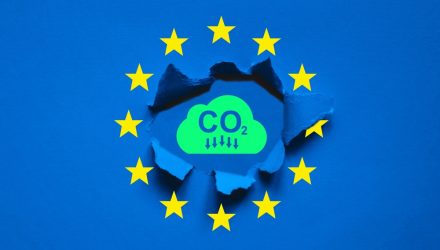Today, the European Commission has passed the RePowerEU Plan, a direct response to the need to decouple from reliance on Russian energy since its invasion of Ukraine. The plan was announced in a press release and lays out the foundations and path forward that will enable EU countries to transition away while also committing to greater uses of renewables and more stringent emissions guidelines.
The plan comes at a time when many European countries have experienced record energy prices driven ever higher with Russia’s invasion of Ukraine when the energy sector was already experiencing price pressures from growing demand driven by the COVID-19 economic recovery.
The EU will be offering access to the new EU Energy platform for member states that will provide voluntary access to gas, LNG, and hydrogen and will pool the demand to obtain purchases from diversified, international suppliers. The plan includes a more firm guideline on the transition away from Russian fossil fuels and acknowledges the challenges and outlooks, both short-term and long-term.
Also included will be the development of EU hydrogen projects and corridors, a greater commitment to renewables via solar and wind energy projects, increasing biomethane production, and building out the infrastructure for a green energy future.
What Does It Mean for Industries and Emissions?
The mid-term goals that the EU has set with the new plan as laid out in the released fact sheet aim for completion by 2027 and include an increase in decarbonization projects, frontloading roughly €3 billion (approximately $3.1 billion USD) of investment via the Innovation Fund, raising the EU target for energy savings from 9% to 13%, and increasing the renewables target from 40% to 45% by 2030.
The EU will be tackling things like improvements to the transportation sector, building out an electric grid that can handle both fossil fuel energy input and renewable energy input, pivoting to hydrogen as an alternative, and also working to replace fossil fuels within industries to cut greenhouse gas emissions.
“The Commission will roll out carbon contracts for difference to support the uptake of green hydrogen by industry and specific financing for REPowerEU under the Innovation Fund, using emission trading revenues to further support the switch away from Russian fossil fuel dependencies,” the press release stated.
Between now and 2027, the REPowerEU projects will need an extra €210 billion in investment provided both from the public and private sector. Currently, there is already €225 billion in loans available under the Recovery and Resilience Facility (RRF), but that number will need to grow to accommodate the changes.
“In addition, the Commission proposes to increase the RRF financial envelope with €20 billion in grants from the sale of EU Emission Trading System allowances currently held in the Market Stability Reserve, to be auctioned in a way that does not disrupt the market,” the press release stated. “As such, the ETS not only reduces emissions and the use of fossil fuels, it also raises the necessary funds to achieve energy independence.”
Capturing the Investment Potentials of the EU Energy Transition
KraneShares offers both a targeted investment opportunity into carbon allowance futures in the EU as well as a broader, globally focused one that includes the EU allowances market futures as part of its exposure.
The KraneShares European Carbon Allowance ETF (KEUA) offers targeted exposure to the EU carbon allowances market and is actively managed. The fund’s benchmark is the IHS Markit Carbon EUA Index, which tracks the most-traded EUA futures contracts, the oldest and most liquid market for carbon allowances.
The market currently offers coverage for roughly 40% of all emissions from the EU, including 27 member states and Norway, Iceland, and Liechtenstein. KEUA has an expense ratio of 0.79%.
The KraneShares Global Carbon ETF (NYSE: KRBN) offers a global approach to investing in carbon allowances markets and diversity in its exposures. KRBN tracks the IHS Markit Global Carbon Index, which follows the most liquid carbon credit futures contracts in the world.
This includes contracts from the European Union Allowances (EUA), California Carbon Allowances (CCA), and Regional Greenhouse Gas Initiative (RGGI) markets. KRBN carries an expense ratio of 0.78%.
For more news, information, and strategy, visit the Climate Insights Channel.

